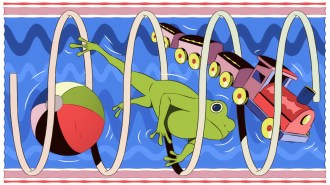Physicists have seen a single particle of light and then let it go on its way. The feat was possible thanks to a new technique that, for the first time, detects optical photons without destroying them. The technology could eventually offer perfect detection of photons, providing a boost to quantum communication and even biological imaging.
Plenty of commercially available instruments can identify individual light particles, but these instruments absorb the photons and use the energy to produce an audible click or some other signal of detection.
Quantum physicist Stephan Ritter and his colleagues at the Max Planck Institute of Quantum Optics in Garching, Germany, wanted to follow up on a 2004 proposal of a nondestructive method for detecting photons. Instead of capturing photons, this instrument would sense their presence, taking advantage of the eccentric realm of quantum mechanics in which particles can exist in multiple states and roam in multiple places simultaneously.
Ritter and his team started with a pair of highly reflective mirrors separated by a half-millimeter-wide cavity. Then they placed a single atom of rubidium in the cavity to function as a security guard. They chose rubidium because it can take on two distinct identities, which are determined by the arrangement of its electrons. In one state, it’s a 100 percent effective sentry, preventing photons from entering the cavity. In the other, it’s a totally useless lookout, allowing photons to enter the cavity. When photons get in, they bounce back and forth about 20,000 times before exiting.
The trick was manipulating the rubidium so that it was in a so-called quantum superposition of these two states, allowing one atom to be an overachiever and a slacker at the same time. Consequently, each incoming photon took multiple paths simultaneously, both slipping into the cavity undetected and being stopped at the door and reflected away. Each time the attentive state of the rubidium turned away a photon, a measurable property of the atom called its phase changed. If the phases of the two states of the rubidium atom differed, the researchers knew that the atom had encountered a photon.
To confirm their results, the researchers placed a conventional detector outside the apparatus to capture photons after their rubidium rendezvous, the team reports November 14 in Science.
“It’s a very cool experiment,” says Alan Migdall, who leads the quantum optics group at the National Institute of Standards and Technology in Gaithersburg, Md. But he warns that identifying photons without destroying them does not mean that the outgoing photon is the same as it was prior to detection. “You’ve pulled some information out of it, so you do wind up affecting it,” he says. Ritter says he expects the photons’ properties are largely unchanged, but he acknowledges that his team needs to perform more measurements to confirm that hypothesis.
Ritter notes that no photon detector is perfect, and his team’s is no exception: It failed to detect a quarter of incoming photons, and it absorbed a third of them. But he says the power of the technique is that, for many applications of single-photon detectors, each detector wouldn’t have to be perfect. Ritter envisions a nested arrangement of improved detectors that, as long as they did not absorb photons, would almost guarantee that every photon is counted. Ultimately, that could benefit fields such as medicine and molecular biology, in which scientists require precise imaging of objects in low-light environments.






